The Great
Pumpkin.
RETRORATING: 16
OFFICIAL
CONTEST WINNER!
- HOME
- YOUTUBE
- ARTICLES
- VIDEOS
- THEATER
- CLASSIFIEDS
- VHS COVERS
- CEREAL BOXES
- GAME BOX ART
- READ ALONGS
- PODCASTS
- FORUM
- FAQ
- POINTS STORE
Don't mess
with the bull.
JOIN!!!
The Story of The Cartrivision aka The American VCR That Never Was
The 80's and 90's was the decade for the video cassette thriving with pre-recorded titles and video rental services. But what if I were to tell you both concepts are older than you think? The video cassette in its early experimental forms may have been largely unheard of (until Beta changed that in 1975) on the consumer front, but in the early 70's, one very ambitious format dared to conquer with no success. This is...
The Story of the Cartrivision aka The American VCR That Never Was

----------------------------------------------------
Chapter 1: Pre-Video Cassette Home Video History
While the concept of making open reel home videos of you and say your loved ones was a common concept albeit a luxury item, the concept of recording off of your tv was completely unheard of. This changed in the mid 1960's when Sony gave the world the CV-2000 - An open reel recording device that lets you record stuff off television.
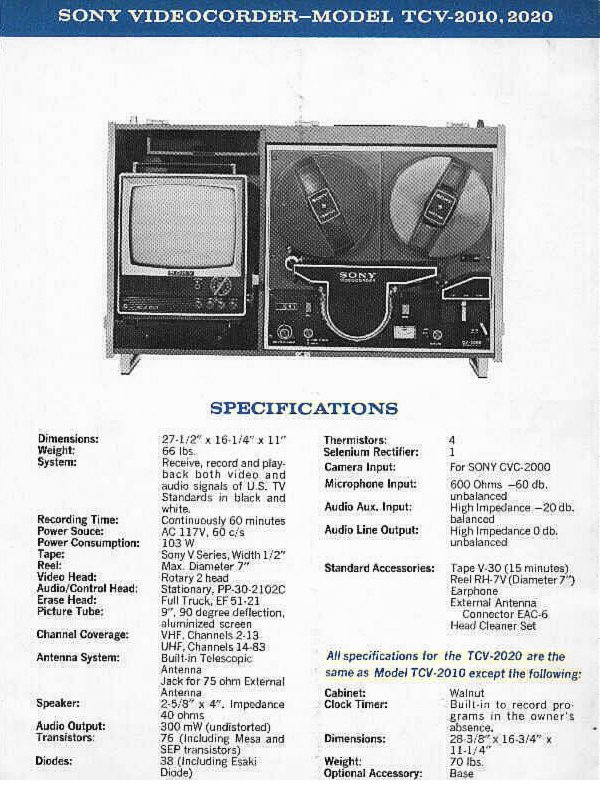 Only flyer I could find of the CV 2000. Even then, this is one for the later models. Jpg photos of this oddity are surprisingly incredibly hard to find
Only flyer I could find of the CV 2000. Even then, this is one for the later models. Jpg photos of this oddity are surprisingly incredibly hard to find
While the CV-2000 was innovative for 1965, it faced three problems: The format could only record in black and white, if you tried playing the recorded reel tape on another CV player it wouldn't work, and not to mention its price tag. The reason this device did not sell is because it was a luxury item only those with money to burn could afford.
Fast forward to 1969 when Sony begins a new concept taking the open reel tape as they sandwich it between two plastic shells like a regular audio cassette. The result, the Sony Video Color Player. Unhappy with the rather bland name, the new technology was rebranded as the U-Matic named for the fact that the tape forms into the shape of a U when inside the player
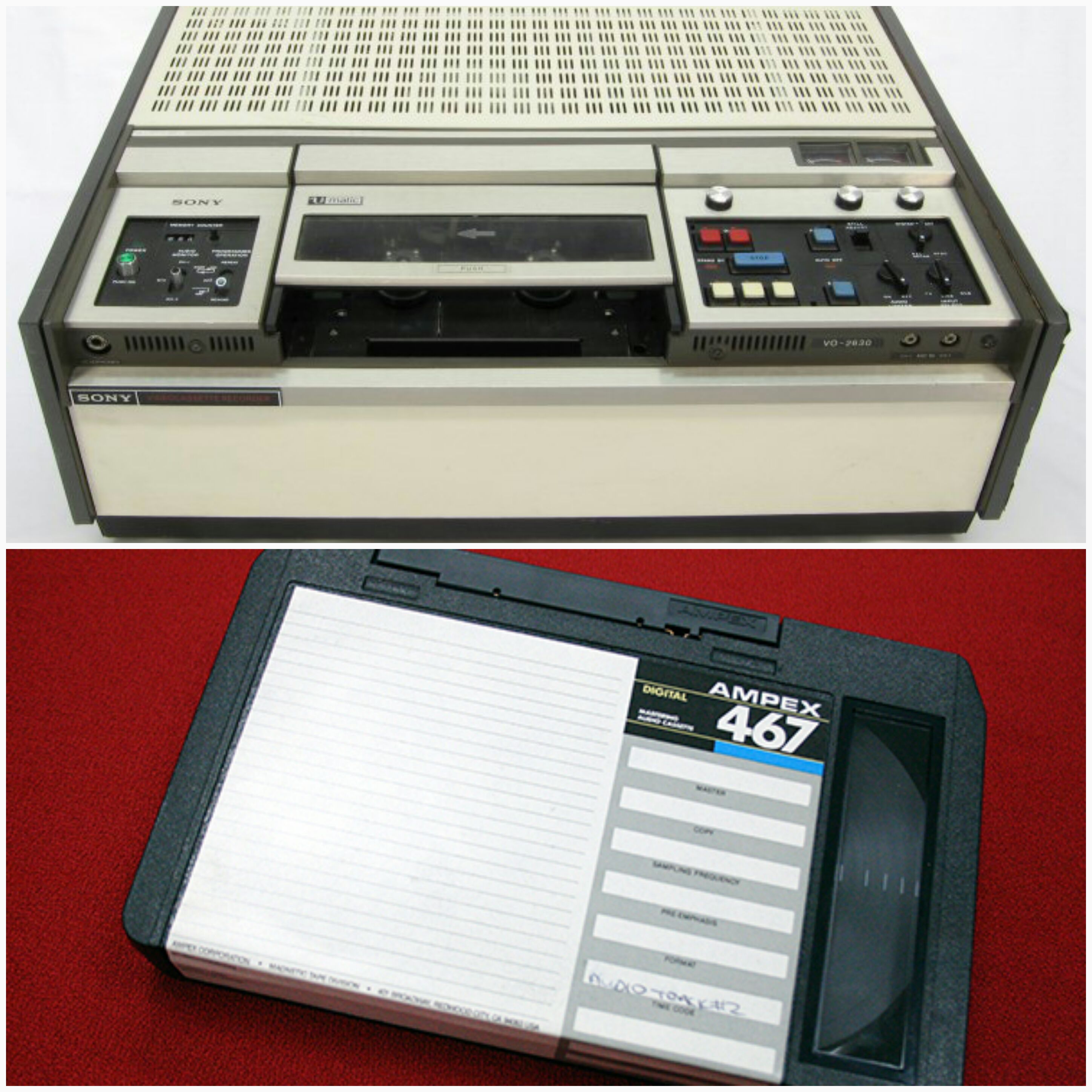 Photo of what a U-Matic VCR and tape looked like (It's twice the size of a VHS tape. Actually that model U-Matic player the VP-1000 was the first of many models
Photo of what a U-Matic VCR and tape looked like (It's twice the size of a VHS tape. Actually that model U-Matic player the VP-1000 was the first of many models
Released in September of 1971, the U-Matic 1 3/4 Inch Tape Player was the next innovation for home video. Despite this, its large price tag kept it from being a major selling item on the consumer front. Schools and public broadcasting stations however could afford this new technology. Aside from being incredibly expensive on the consumer market, the biggest problem with the U-Matic stemmed from the fact that the player was not very friendly to the tapes. Leave a U-matic tape paused long enough and the tape will melt on to the rollers creating jamming and crumpling issues resulting in sticky tape shed syndrome. That and the color was often unreliable. Shades of red were especially the format's worst nightmare resulting in bleed and over exaggeration tones. Because no pre-recorded titles were officially made for the U-Matic, finding footage of it is beyond hard to find. That said, here's some off air U-Matic footage recorded circa November 1975
I wasn't kidding about the faulty color. Other than being unstable at times, the video quality is not bad by at least 1971 home video standards
With all set in place, something was still missing. While no pre-recorded titles existed yet, one company worked on a format that would remedy that. Here's where the meat of the article comes in...
Chapter 2: Cartridge Television - A Unique Way of Looking At Things
Around the time Sony announced what would later become the U-Matic, a new independent electronics manufacturer was established: Cartridge Television Inc. Their goal, to bring a new way of watching television to the market. More specifically, they spent two years creating a way to bring a pre-recorded tape onto a video cassette in the form of a large 8-track like cartridge. The format, the Cartrivision
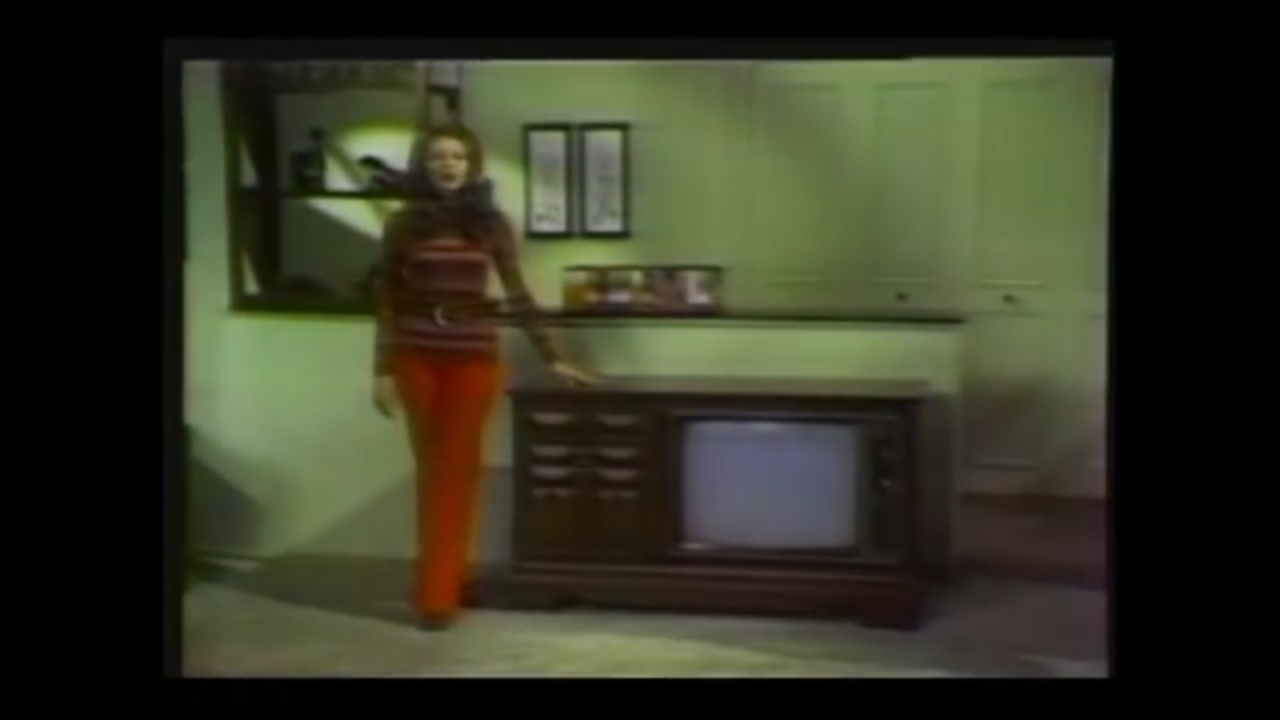 Hoo-man feeeeeeemale showing off a Cartrivision TV/VCR console (From the Cartrivision User's Manual tape)
Hoo-man feeeeeeemale showing off a Cartrivision TV/VCR console (From the Cartrivision User's Manual tape)
Eventually picked up for distribution by electronics manufacturer AVCO, the format debuted as a test market item for Sears and Montgomery Ward's shops in Chicago, Illinois in June of 1972 before seeing a nationwide release that fall selling for $1,600. The Cartrivision VCR was built into the tv set which caused the consumer to have to buy a new tv for the add on.
Like I said earlier, by this point, no pre-recorded titles had officially existed for any home video yet. Cartrivision remedied this
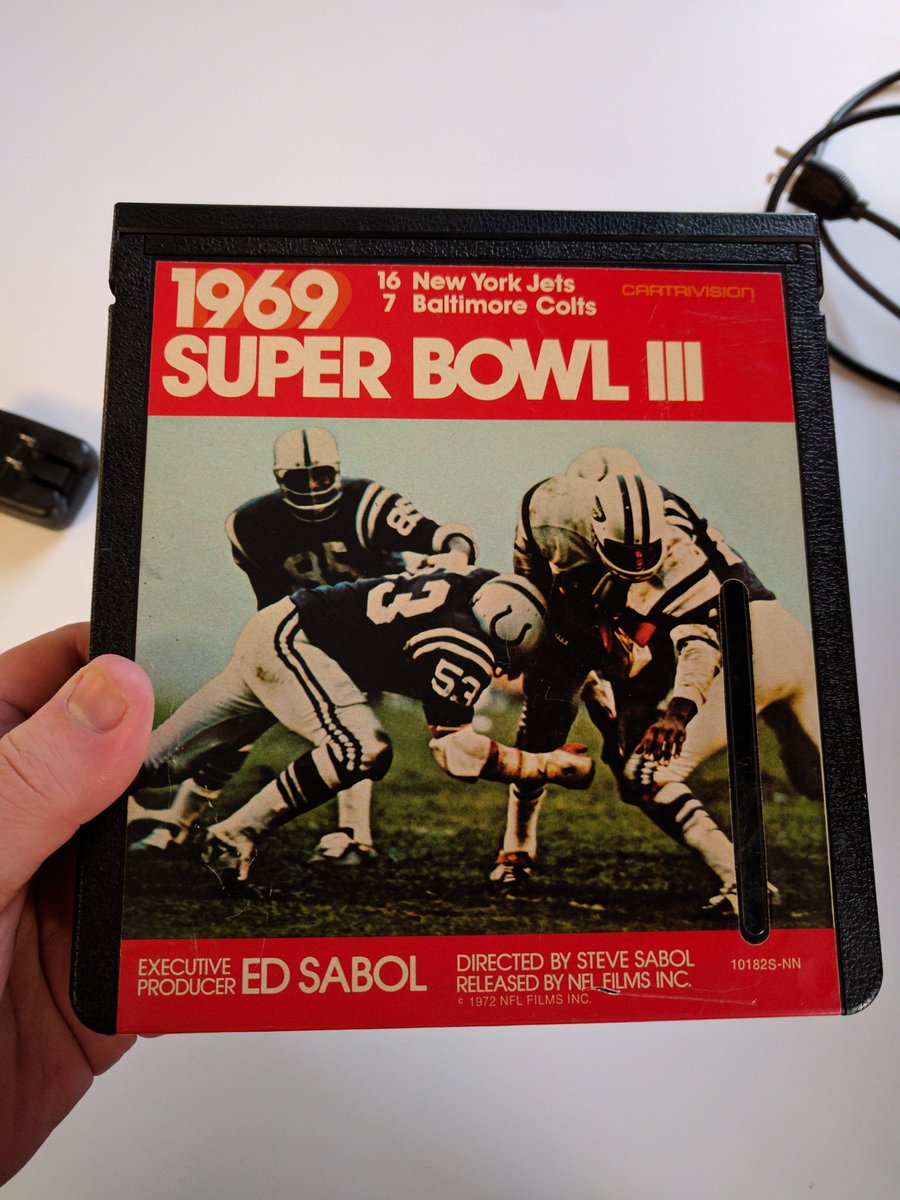 This is what a Cartrivision tape looks like. I also call it a Visual 8-track since it sort of looks like a large 8-track cassette
This is what a Cartrivision tape looks like. I also call it a Visual 8-track since it sort of looks like a large 8-track cassette
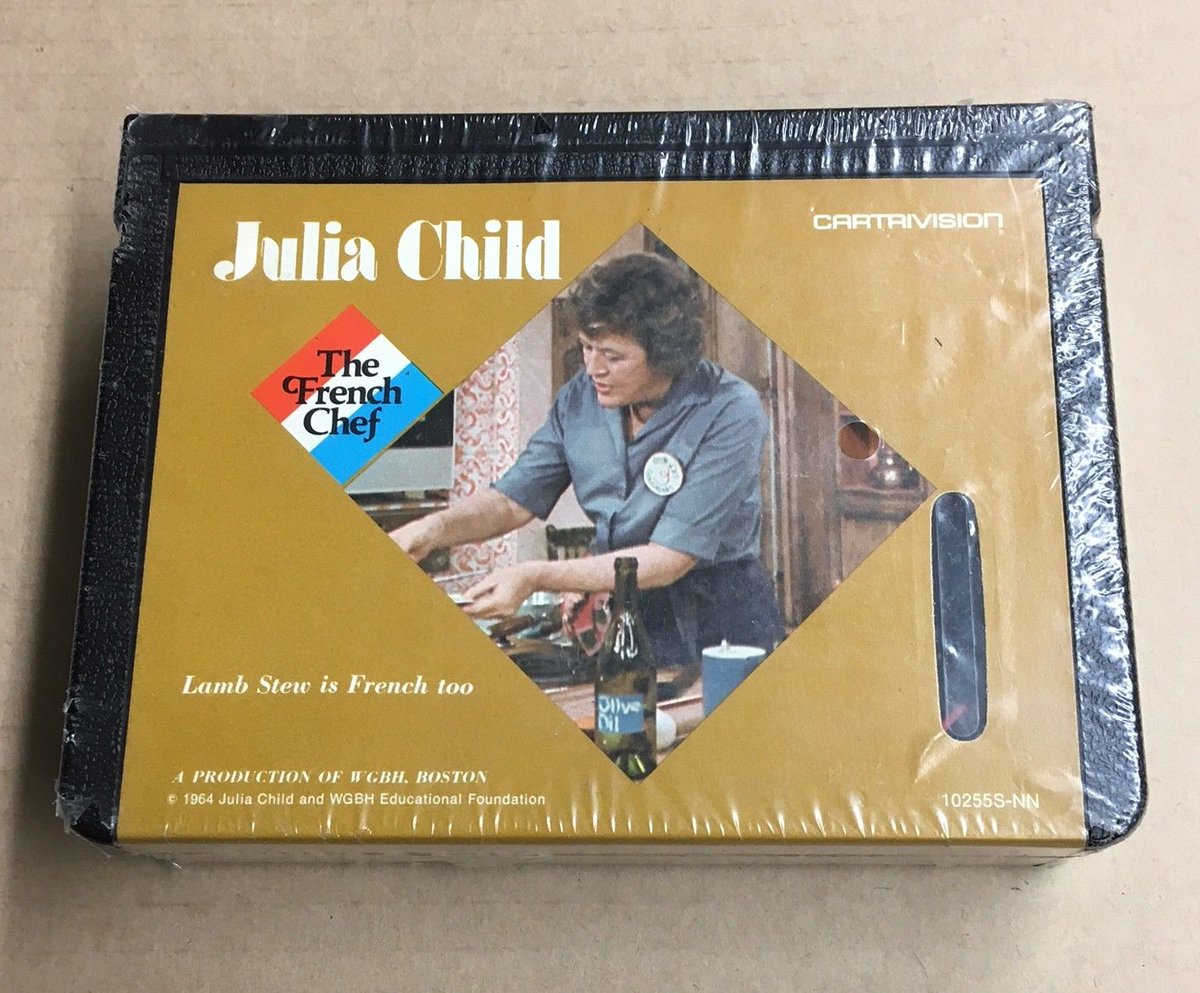 Cartrivision tapes came in 2 sizes. For something lenghtier you had the large tapes and then you had the smaller tapes for something that was like 20 minutes to half an hour
Cartrivision tapes came in 2 sizes. For something lenghtier you had the large tapes and then you had the smaller tapes for something that was like 20 minutes to half an hour
Primarily, the titles released for the format were old movies, nature documentaries, educational shows, kids cartoons from the previous decade, controversial subject matter, and the most recent sport events. Nothing to really write home about
 More Cartrivision tapes including a blank one. Believe it or not, you will see video footage from one of these tapes later in the article. I just won't tell you which one. Also, note the red tape, you're just about to learn more about their purposes
More Cartrivision tapes including a blank one. Believe it or not, you will see video footage from one of these tapes later in the article. I just won't tell you which one. Also, note the red tape, you're just about to learn more about their purposes
Cartrivision also introduced video rental service. As you can imagine, no Cartrivision Video Rental shops were readily available in 1972, so how did you rent tapes for the format? Via catalogue.
 Cartrivision Rental Catalogue
Cartrivision Rental Catalogue
Here's how it worked: You would skim through the catalogue for titles that looked good and then you would call the company who would send you a red rental tape.
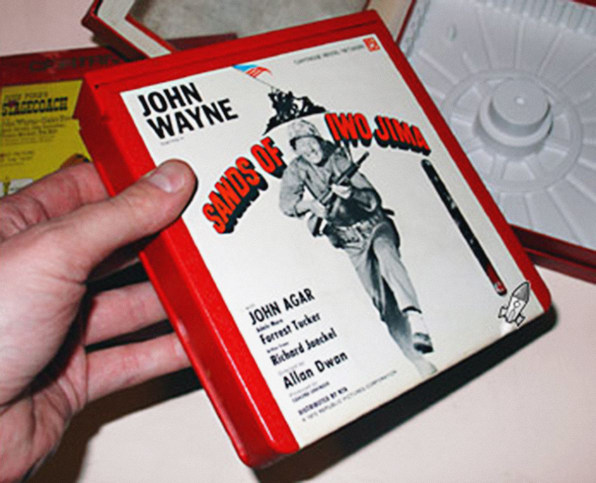 A red Cartrivision tape up close (Sands of Iwo Jima Copyright 1952, Paramount Pictures)
A red Cartrivision tape up close (Sands of Iwo Jima Copyright 1952, Paramount Pictures)
You could then watch the tape with the catch being that unlike a regular black tape, the red ones you could not fast forward or rewind in your VCR. You could only watch the tape once and when it was finished, you would send the tape back to the company who would then put the tape in a special rewinder so they could start the process with the next customer.
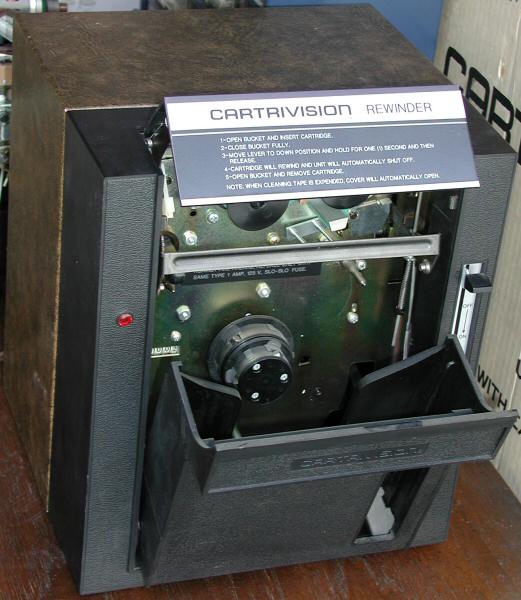 A Cartrivision Rental Rewinder
A Cartrivision Rental Rewinder
Now you might be thinking "Wow RS88, I never knew this stuff existed before. So how come Cartrivision never caught on? Our parents would have heard about it new if it was a thing." To which I say no they wouldn't have. The latest technology no matter how innovative it is can usually get shadowed in obscurity for a lot of reasons. And Cartrivision was no exception to this onofficial rule. So how come this ambitious format never caught on? You're about to find out...
Chapter 4: The Downward Plummet of Ambitious Technology
So how could something as ahead of its time as the Cartrivision ultimately fail? Well, quite a few reasons actually. Let's break them all down:
Reason #1 - The Price Tag: When the format made its debut on the market, the VCR built in to the tv sets cost $1,600 with tapes starting at roughly $10 a pop. This made Cartrivision a luxury item nobody could afford and even if they could, very few people were willing to shell out that much cash for a color tv set with an add-on nobody knew how to use. And speaking of the tapes...
Reason #2 - The Tapes: One of the biggest problem with the tapes stemmed from the fact that the reels inside the cartridge were stacked on top of each other causing the film to roll diagonally from one end to the other
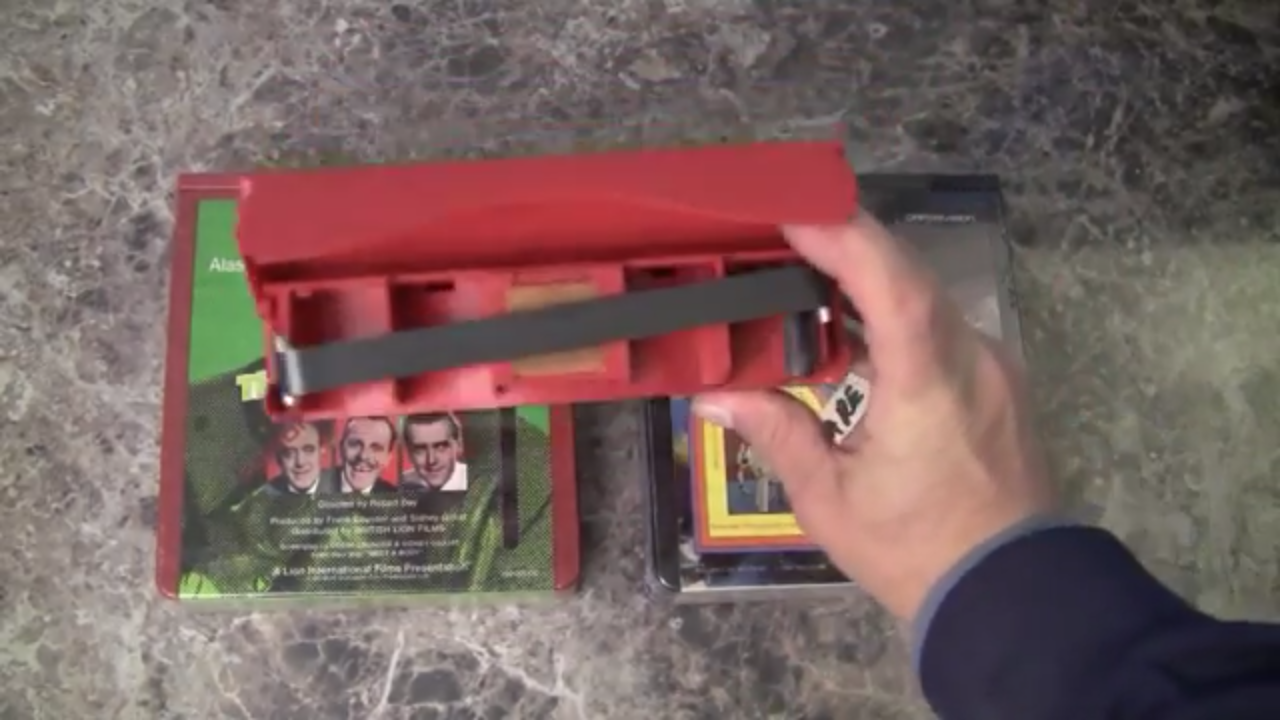 The inside of one of the tapes
The inside of one of the tapes
This created jammimg and crumpling issues resulting in shaky picture quality and audio dropouts. Another thing about the tapes was that winter, a good chunk of them had to be thrown out because they decayed due to being stored in a hot and humid warehouse in one of the southern states.
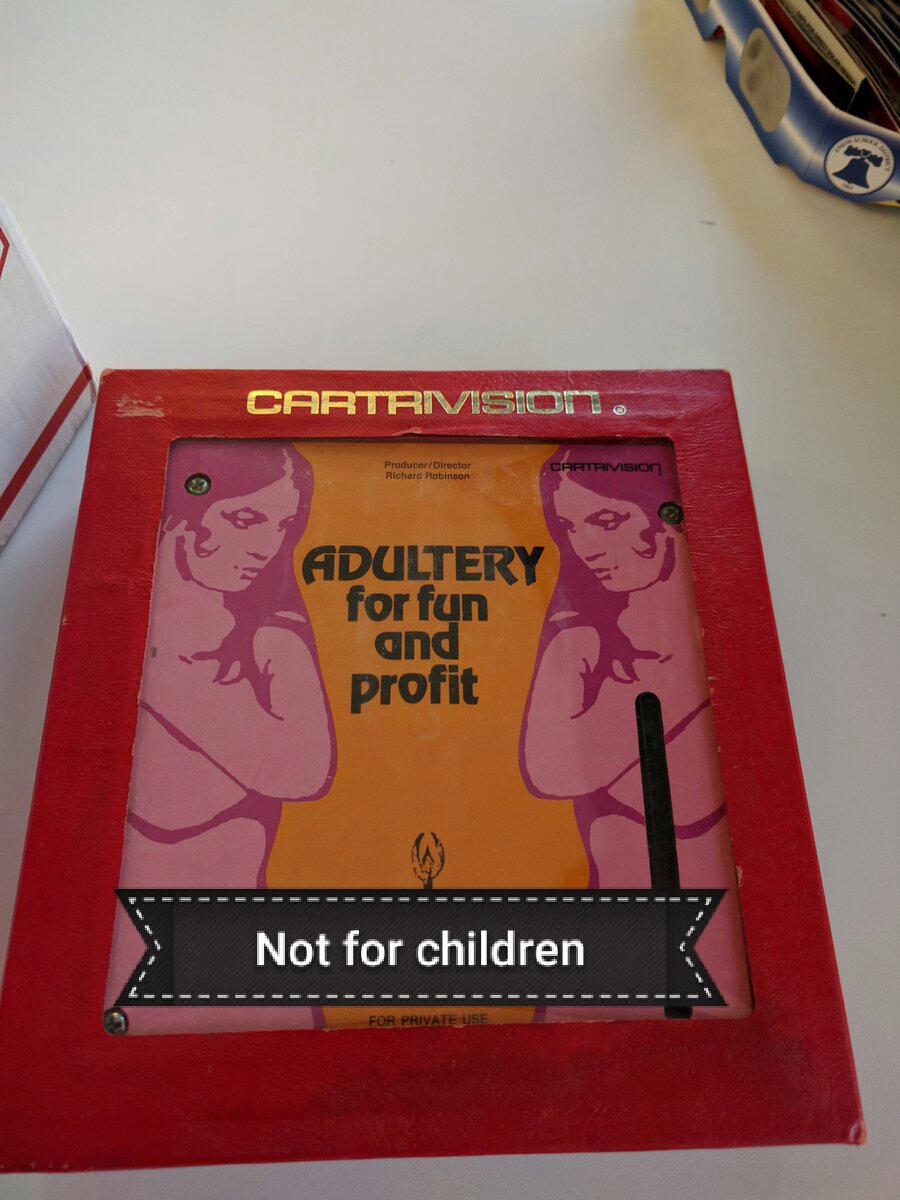 One more thing about the tapes and an interesting little piece of trivia: Cartrivision holds the honor of sorts of being the first video format to offer a selection of adult films. This still did not help sales of the format.
One more thing about the tapes and an interesting little piece of trivia: Cartrivision holds the honor of sorts of being the first video format to offer a selection of adult films. This still did not help sales of the format.
Reason #3 -The Picture Quality: One advantage the U-Matic had for its flaws was at least the picture quality was a bit smoother. Unfortunately the same could not be said for Cartrivision. That's because Cartrivision used a skip field method that cut out the 3rd frame per second causing for some slow and choppy picture quality. The reason they did this was so they could squeeze 2 hours on to a tape.
Reason #4 - Overall Poor Execution: At the end of the day, the format was doomed to failure. But this still did not stop the Cartrivision people from trying to push the product as seen in this 1973 episode of What's My Line?
Cartrivision Promo on What's My Line? Take a good look, people! This is about as close to seeing one of these in action as you're going to get. Cartrivision VCRs are hard to come by and usually run for some extremely serious dough if you can find one in working condition
Chapter 5 - The end of the format and epilogue
1973 could have been the year of hope for Cartrivision, but such was not the case. That year, RCA announced plans for their own video cassette format called the Mag (Short for magnetic) Tape.
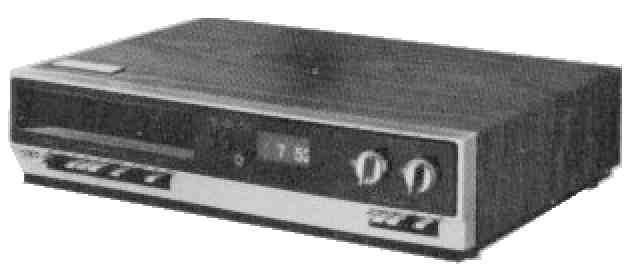
One of the only photos of the MagTape VCR Prototype. According to someone I met in an RCA forum, this product would have blown even Betamax upon its eventual release out of the water and the video quality was that good apparently. I myself can't confirm that since we never got this format
At first Cartridge Television Inc saw this as a threat, but considering MagTape was never released, it was not much of one. Regardless, AVCO was ready to pull the plug on Cartrivision after having lost thousands in the project and Cartrivision was discontinued that July after 13 months. Its parts, unsold stock and tapes were auctioned off later that year. No stand alone units for the format were ever made (save for some later homemade models designed by hobbyists of the format)
 A Homemade Stand Alone Cartrivision VCR
A Homemade Stand Alone Cartrivision VCR
Epilogue
So was it a complete loss that the Cartrivision failed on the market? Both yes and no. While the format wasn't without its flaws, it showed what the video cassette could be capable of and even paved the way for concepts that were unheard of in 1972. Said concepts would eventually catch on years later in different formats. It was a well meaning piece of technology history that suffered from poor execution and a lot of bad choices yes, but had it not been for this oddity, none of you would have been going to Blockbuster Video in the 80's and 90's nor would you have watched the hottest Disney films of the time repeat ad nauseam. At the end of the day, Cartrivision dared to conquer and even if it failed, it did its best and that's all that matters.
http://www.angelfire.com/alt/cartrivision/
To learn more about this unsung piece of retro tech and its afterlife, here is a website run by hobbyists of the format. And as promised, here's some of the only existing video footage left of the format
I Am Cartrivision Store Demo Tape (Used for the display model Cartrivision tv sets at Wards and Sears stores)
Also, did you guess which one of the tapes from that earlier photo you would be seeing? If you guessed the User's Manual, a winner is you
Cartrivision User's Manual (The problems I mentioned earlier are all present: The shaky picture, the audio dropouts, anyway, enjoy)

Vaporman87 Posted on Dec 30, 2019 at 08:14 PM
I had heard of this medium before, but this was a wonderful deep dive into the lore of Cartrivision. Nicely done, RetroSnob.
RetroSnob88 Posted on Dec 30, 2019 at 07:52 PM
I would like to point out the Chapter 4 error. That's actually 3* Sorry folks. The curse of fat fingers. Other than that, hope you enjoyed learning about this neat little oddity
Benjanime Posted on Dec 30, 2019 at 05:55 PM
a very intriguing trip down memory lane, i'm sure vapor would love this :)
Ever wondered what would happen if Mario and Donkey Kong switched roles? Or what would happen if Pokemon moves were suddenly mo...
When you think of Halloween the first thing that comes to mind are usually ghosts, goblins...
Halloween Is in My Blood By Anthony J. Rapino I know I’ve always loved Halloween and horror. I can reach back in time and pluck ...
Bill and Ted’s Excellent Adventure was a sleeper hit on VHS in the late 80’s thanks to the non-heinous tale of two would-be rocker buddies surfing...
When you're stuck playing outside during your childhood, what goes through your mind as a means of having fun? Do you play it easy and just bring out ...







